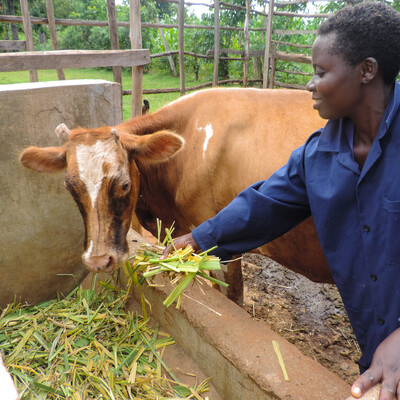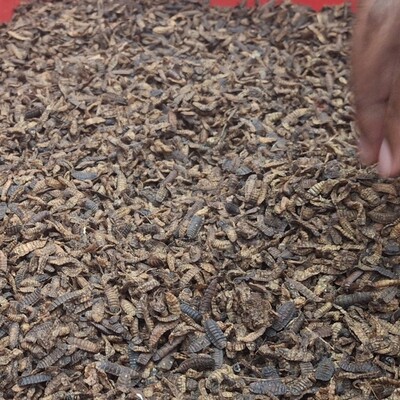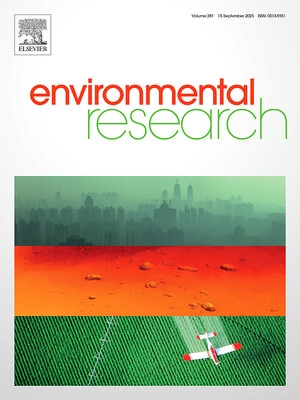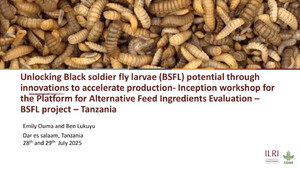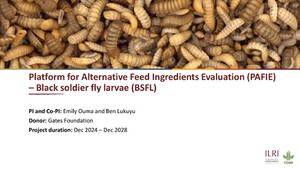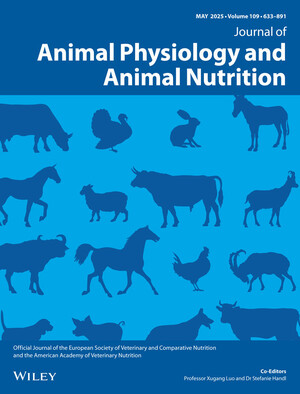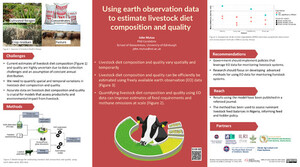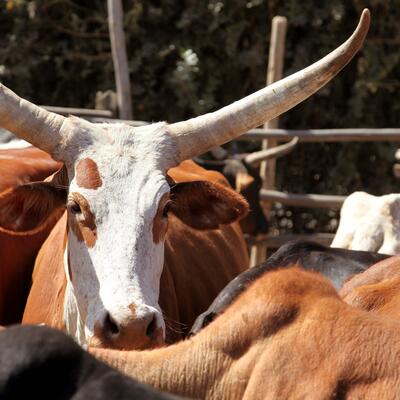
Cereal straws and stovers for sustainable livestock futures: When crop biomass becomes livestock gold
ILRI scientist Michael Blümmel (photo by ILRI/Stevie Mann) and beef cattle in Indonesia consuming straw (photo by ILRI/Jules Mateo).
Michael Blümmel, deputy program leader for the Feed and Forage Development program at the International Livestock Research Institute (ILRI), is lead author on a new paper that explores the big benefits of treating cereal straws and stovers—the ‘residues’ of cereal crops after their grain has been harvested—to release their sugars, thereby turning these crop residues into nourishing feed for ruminant farm animals—cows, water buffaloes, goats and sheep.
The dry stalks of cereal plants after their grain and chaff have been removed—called ‘straw’ from fine grain crops such as rice, wheat and teff and ‘stover’ from coarse grain plants such as maize, millet and sorghum—have been used to feed farm animals, to improve soils and to burn as household fuel since ancient times.
Evidence from ILRI and its partner organizations shows that these straw and stover by-products of crop production will play an increasingly large role in building sustainable livestock futures across the developing world.
With straw and stover here to stay and demand for meat and milk rising fast in developing countries, cereal crops are being redesigned to make their residues more nourishing for cattle, goats, sheep and other food-producing ruminants.
The following excerpts (excluding references) are taken from the new paper.
‘Ten cereal straws and stovers from India were treated using the ammonia fiber expansion (AFEX) technique to explore the effectiveness of the AFEX technique for releasing sugars from structural carbohydrates and for the upgrading of cereal crop residues as livestock feed.
Recovery of glucose and xylose in AFEX treated material was about three times the recovery in untreated material.
‘. . . Lignocellulosic biomass from forest, agricultural wastes and crop residues is the most abundant renewable biomass on earth with a total annual production of about 10–50 billion metric tons. About 3.8 billion metric tons are contributed by crop residues with cereals contributing 74%, sugar crops 10%, legumes 8%, tubers 5% and oil crops 3%. Cellulose is the major constituent in lignocellulosic biomass ranging from about 300–550 g/kg followed by hemicelluloses which constitutes about 150–350 g/kg and lignin which constitutes about 60–300 g/kg. . . .
‘The work on 2nd generation bio-fuels (bio-fuels based on lignocellulosic biomass rather than on grains as in 1st generation biofuel) has attracted US multi-billion dollars of investment during the last two decades.
It may be feasible to utilize spin-offs from 2nd generation bio-fuel technologies to upgrade lignocellulosic biomass for animal feeding by increasing the accessibility of sugars in plant cell walls.
‘This includes pretreatment approaches that render the lignin-hemicellulose-cellulose matrix more accessible to hydrolysis by rumen microbial and/or external enzymes and advances in enzyme technologies which made enzymes more stable, more affordable and targeted and substrate specific. . . .
Considering the huge quantities of lignocellulosic biomass available and the high nutritive quality of their hexose and pentose sugars, it comes as no surprise that attempts to upgrade lignocellulosic biomass for livestock fodder reach back to the beginning of the 20th century.
. . . The work on 2nd generation bio-fuels (bio-fuels based on lignocellulosic biomass) was motivated by reasons very similar to those that had motivated the early animal nutritionists: the abundance of lignocellulosic biomass and its content of basic sugars that can be converted to fuel in form of ethanol.
‘This work has attracted multi-billion US dollars of investment during the last two decades. It may be feasible to utilize spin-offs from 2nd generation bio-fuel technologies to upgrade lignocellulosic biomass for animal feeding, particularly pretreatment approaches that render the lignin-hemicellulose-cellulose matrix more accessible to hydrolysis by rumen microbial and/or external enzymes. Of the numerous mechanical, chemical, and biological approaches applied in 2nd generation bio-fuel technologies, AFEX seems to be the most promising and was chosen for the work presented here. . . .
It is important to understand that crop residues are the major feed resources for livestock in low and middle income countries (LMCs) and for example in India comprise about 70% of the feed resources.
Even in specialized and commercialized urban and peri-urban dairy systems crop residues usually contribute more than 50% of the feed resources explaining their intensive trading. . . .
AFEX treatment presents a promising spin-off technology from 2nd generation biofuel to upgrade cereal crop residues to close to concentrate level fodder quality. . . .
Considering that in many LMC crop residues comprise the major feed resources, the impact of such interventions could be enormous.
‘. . . The authors gratefully acknowledge support from the USAID-Linkage Grant Scheme to the International Livestock Research Institute led Livestock and Fish CRP.’
Read the whole paper in Animal Feed Science and Technology, Ammonia Fiber Expansion (AFEX) as spin off technology from 2nd generation biofuel for upgrading cereal straws and stovers for livestock feed, by Michael Blümmel (ILRI), Farzaneh Tevmouri, Janette Moore, Chandra Nielson, Josh Videto, Prasad Kodukula, Sharada Pothu. Ravi Devulapalli and Padmakumar Varijakshapanicker.








